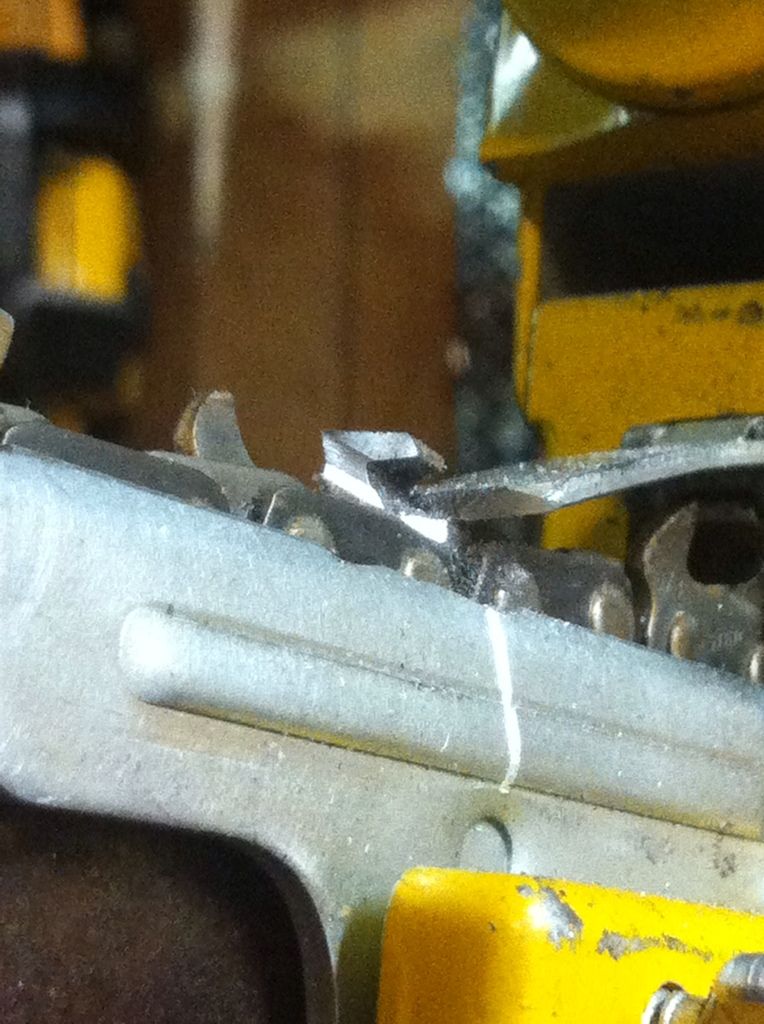parrisw
Tree Freak
I thought taking the back of the tooth forward, reduced drag.

I thought taking the back of the tooth forward, reduced drag.
Well??? We know it's a depth gauge... But does the following tooth take care of chip removal???
And how does the back of the tooth help in this matter???

If you do a little test with your
saw!! Ok. Cut into the cant and kill it in
the middle don't move the saw, Break
the cookie off without moving the saw.
Break it all the way down where you can see
the cutters. You will find most of your chips in front
of the the cutter.

I thought taking the back of the tooth forward, reduced drag.
Yes, that and weight. When the chain
starts spinning at high RPM the weight
will make it leave the bar. It makes switching
tough when your chain is flying out of
the bar 2 inches. I am talking about the
open mod saws running 14-15 tooth drive
sprokets.
If you do a little test with your
saw!! Ok. Cut into the cant and kill it in
the middle don't move the saw, Break
the cookie off without moving the saw.
Break it all the way down where you can see
the cutters. You will find most of your chips in front
of the the cutter.

So what exactly are you guys doing to the back of the cutter and how? Also what does this do in return to make it faster?
This was my first ever attempt at filing square. I missed the inside corner a bit.

Well this weekend is my GTG and I look forward to trying out my chains, finally something that might give me an "edge" over the competition.
Well this weekend is my GTG and I look forward to trying out my chains, finally something that might give me an "edge" over the competition.
I just got done dragging the cants around in sand and hid a few nails in them so don't get your hopes up...
Opinions on the atop square sharpener? Is it worth $200? Just curious.
Opinions on the atop square sharpener? Is it worth $200? Just curious.
Enter your email address to join: